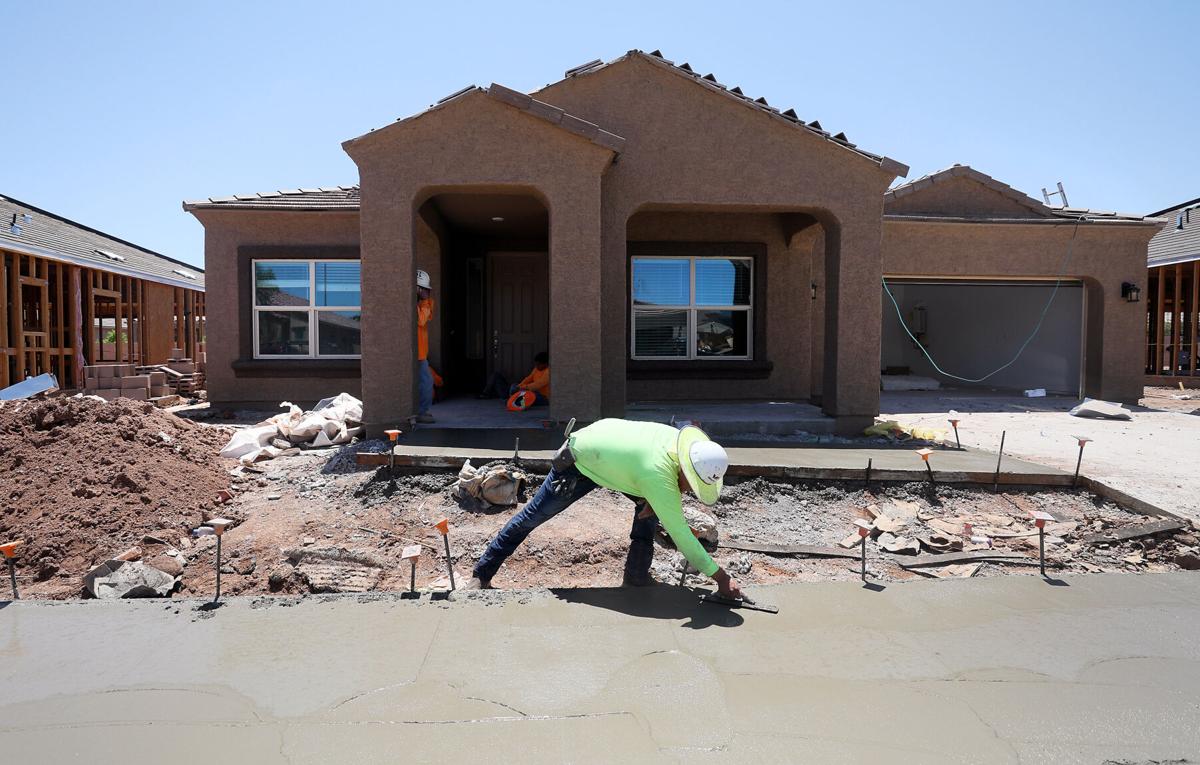Arizona’s jobless rate finally dropped last month to where it was when the COVID-19 pandemic began.
And the state has regained virtually all of the private sector jobs it lost.
New figures Thursday from the state Office of Economic Opportunity put the seasonally adjusted unemployment rate at 5.7%. That’s down a half a point from August.
That still leaves the jobless rate here higher than the national average which declined four-tenths of a point in September to 4.8%
The new state report shows growth across most sectors of the economy. Even the sectors that lost jobs in September, like manufacturing and professional and business services, still are doing better than a year ago.
But there’s one notable exception: Stores that sell clothing and accessories continue to shed employees, with worker levels still 2% less than a year ago.
Doug Walls, the labor market analyst for the agency, said some of this likely is due to the shift in buying habits that already was taking place before the COVID-induced downturn sent people to their computers and phones to make purchases rather than going in to brick-and-mortar stores.
But there’s also something else: a lifestyle change.
Put quite simply, people used to dress up to go out.
Walls said that starts with going to an office, meaning the need to buy formal or professional wear.
And now?
“We do know that more people are working from home,” he said. And when they do buy things, “more people are shopping online.”
Ditto going out to eat.
While the level of getting dressed may depend on the kind of restaurant, dining out still generally required something more than sweat pants and flip-flops. Now, with the increasing popularity of DoorDash, Grubhub and Uber Eats, it’s easier than ever to get restaurant food delivered to the door.
And no need to change.
The increasingly healthy economy is showing up in other ways.
Walls cited what the U.S. Bureau of Labor Statistics calls the “quits rate,” a reflection of the percent of workers who are employed who voluntarily quit their jobs.
That figure — currently available only nationally — dropped to 1.6% in April 2020 in the first months of the downturn. The most recent figure is 2.9%, the highest number BLS has recorded since the beginning of the century.
“A high quits rate generally speaks to workers’ confidence in their ability to find better job opportunities elsewhere,” Walls said.
“It’s typical in times of economic expansion to see the quits rate go up,” he said. “And in times of economic contraction (is) where you see the quits rate go down.”
And there’s another indicator.
In the past year, the average hourly wage nationally has risen 4.6%, to $30.85. That reflects companies having to pay more to attract and retain workers.
The increase wasn’t quite as sharp in Arizona, with a 2.5% boost. And that continues to keep wages here below the national average, at $28.38.
Overall, the state finally has regained 99.6% of the 320,200 private sector jobs it has lost since the recession began.
Some sectors are doing far better, led by trade and transportation, which has recovered 173% of the lost jobs. Many of those are in warehouse and delivery workers, all related to increasing online sales.
There also has been strong recovery in hotel employment. And Walls said there is reason to believe that will get even better.
He cited figures from the Transportation Security Administration of “airport throughput,” the number of passengers willing to get on a plane.
That dropped to just 700,000 at the beginning of the recession. And while there was a dropoff this past August, Walls said the latest numbers hit 13.5 million, about where they were when the downturn hit.
By contrast, the information sector has recovered just 13% of the 6,800 jobs lost.
Walls said that sector includes people working in movie theaters. And that may reflect both the dearth of new releases as well as continued hesitancy of people to crowd into a theater, especially with so many more options now available online.





